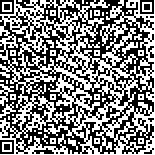| 摘要: |
| [摘要] 目的 观察血清与脑脊液中降钙素原(procalcitonin,PCT)和神经元特异性烯醇化酶(neuron specific enolase,NSE)检测在小儿不同病因颅内感染中的含量变化。方法 选取62例颅内感染患儿,其中细菌性脑膜炎(化脑组)30例,病毒性脑炎(病脑组)32例,设同期疑似中枢神经系统感染33例为对照组。测定患儿血清及脑脊液中PCT和NSE含量,并分析其与脑脊液糖及蛋白指标的相关关系。结果 化脑组血清与脑脊液中PCT均高于病脑组和对照组,差异有统计学意义(P<0.05);病脑组血清与脑脊液NSE含量显著高于化脑组和对照组,差异有统计学意义(P<0.05)。化脑组脑脊液糖降低、蛋白水平升高,与病脑组及对照组比较差异有统计学意义(P<0.05)。血清PCT、NSE与脑脊液中PCT、NSE含量均呈极强正相关(P<0.001)。血清和脑脊液PCT与脑脊液蛋白升高呈正相关性(P<0.001),血清和脑脊液PCT与脑脊液糖降低呈负相关性(P<0.001)。结论 检测血清和脑脊液PCT和NSE含量变化均有助于颅内感染类型及脑损伤程度的判断。检测血清PCT和NSE的含量较脑脊液检测更加简单、更易操作及快捷,值得在临床推广应用。 |
| 关键词: 降钙素原 神经元特异性烯醇化酶 血清 脑脊液 颅内感染 儿童 |
| DOI:10.3969/j.issn.1674-3806.2019.03.17 |
| 分类号:R 446.11 |
| 基金项目: |
|
| Comparison of the changes of serum and cerebrospinal fluid procalcitonin and neuron specific enolase in children with intracranial infections caused by different pathogens |
|
LIN Meng, FANG Qiong
|
|
Provincial Clinical Medical College, Fujian Medical University, Department of Pediatrics of Fujian Provincial Hospital, Fuzhou 350001, China
|
| Abstract: |
| [Abstract] Objective To observe the content changes of procalcitonin(PCT) and neuron specific enolase(NSE) in serum and cerebrospinal fluid(CSF) in children with intracranial infections caused by different pathogens. Methods Sixty-two cases of intracranial infections were selected, including 30 cases of purulent meningitis(PM group) and 32 cases of viral encephalitis(VE group). Thirty-three cases of suspected central nervous system infection were set as control group. The levels of PCT and NSE in the patients′ serum and CSF were detected. The correlations between PCT, NSE and sugar and protein indexes in the CSF were analyzed. Results The levels of serum and CSF PCT in the PM group were significantly higher than those in the VE group and the control group(P<0.05). The levels of serum and CSF NSE in the VM group were significantly higher than those in the PM group and the control group(P<0.05). Compared with those in the VM group and the control group, the sugar level decreased and the protein level increased significantly in CSF in the PM group(P<0.05). There was a strong positive correlation between serum PCT, NSE and CSF PCT and NSE levels(P<0.001). The levels of PCT in serum and CSF were positively correlated with the elevated CSF protein(P<0.001), and the levels of PCT in serum and CSF were negatively correlated with the decreased CSF glucose(P<0.001). Conclusion The changes of PCT and NSE levels in both serum and CSF can help to determine the type of intracranial infections and the degree of brain injury. The detection of PCT and NSE in serum is simpler, easier and faster than that in cerebrospinal fluid, and is worthy of clinical application. |
| Key words: Procalcitonin(PCT) Neuron specific enolase(NSE) Serum Cerebrospinal fluid Intracranial infection Children |

